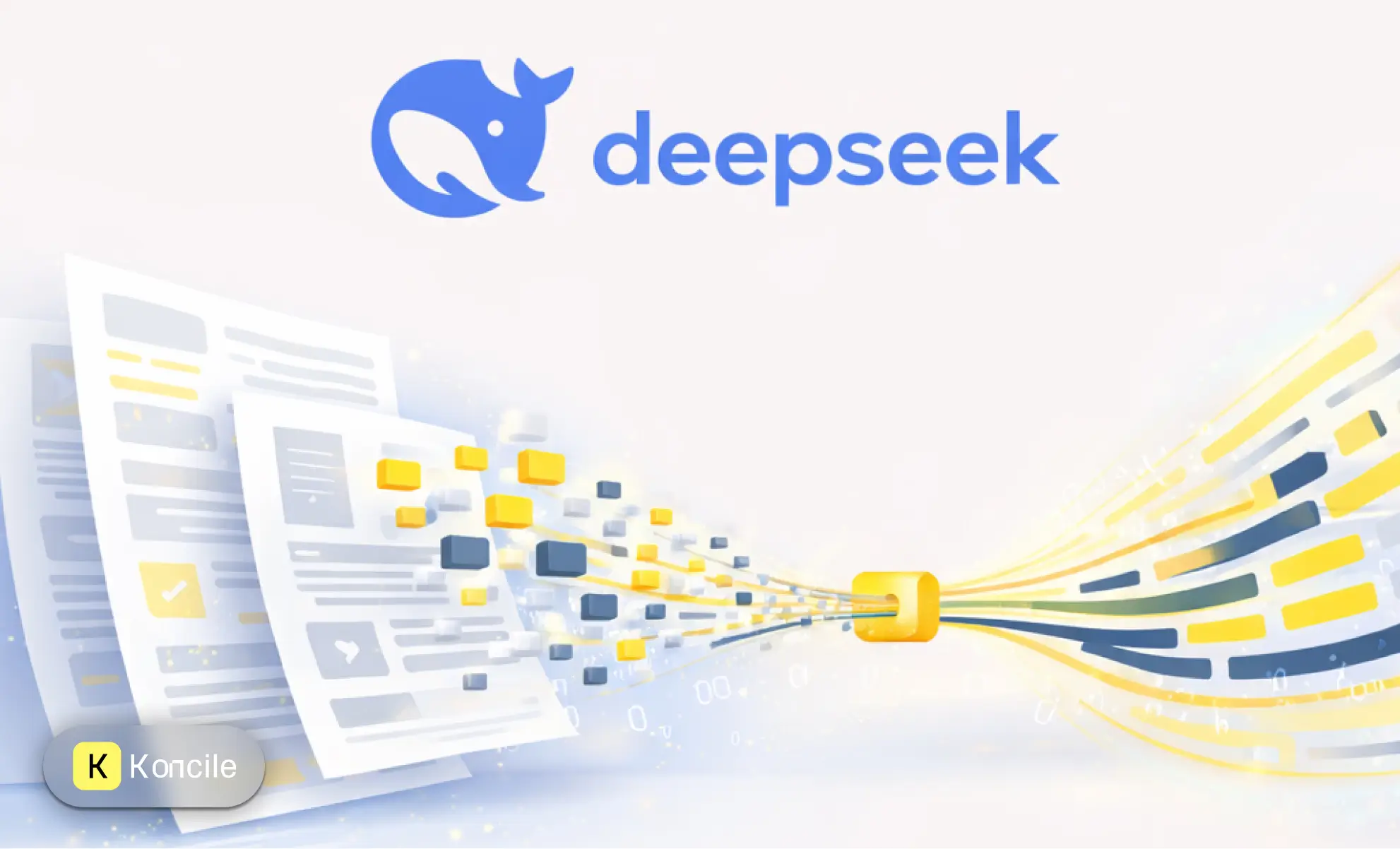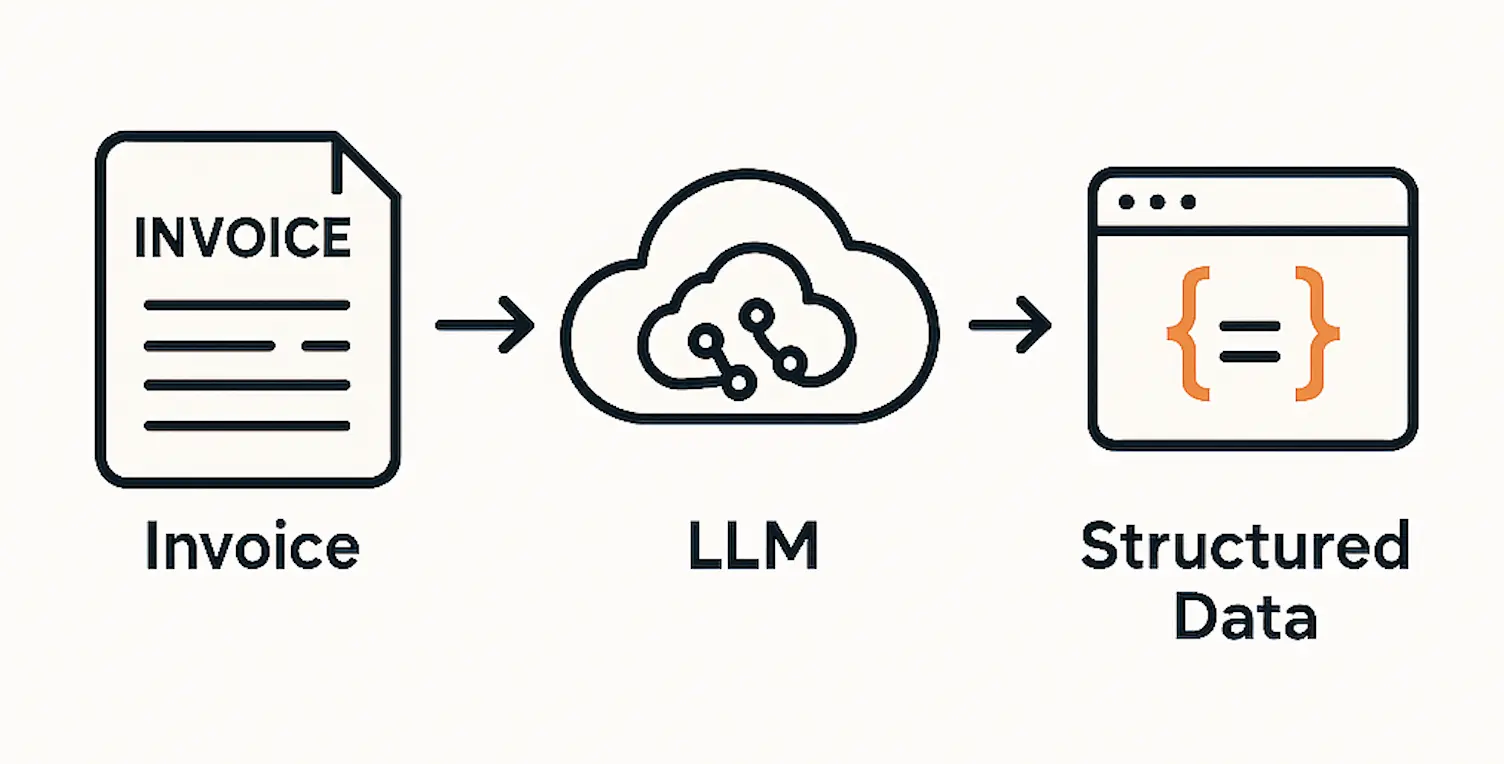
A clear, structured explanation of DeepSeek OCR and its approach to document context.
Glossary
Dernière mise à jour :
November 4, 2025
5 minutes
Automating administrative management is no longer a luxury, but a necessity. Among time-consuming tasks, extracting invoice data is at the top of the list. Large Language Models (LLM) such as Claude (Anthropic), GPT (OpenAI), and Gemini (Google DeepMind) are positioned as powerful solutions for transforming an unstructured document into usable data.But which is the most efficient? To answer, we analyzed their accuracy, speed, cost, security and ease of integration.
Comparing GPT, Claude and Gemini for the extraction of invoices, according to precision, costs, speed, security and integration.
An LLM (Large Language Model) is an artificial intelligence model that is trained to understand and generate natural language. When applied to the field of financial documents, it becomes capable of extracting accurate and structured information from complex content. Concretely, it can identify key fields such as the date, the invoice number, the amounts excluding taxes, the VAT or the total including VAT. He also knows how to interpret the context, for example, distinguish a customer number from an invoice number, and organize the extracted data in standard formats such as JSON, CSV or XML, which can be directly used in an ERP.
The process of extracting an invoice generally involves two main steps. The first is OCR (Optical Character Recognition), which allows you to convert a scanned image or PDF into plain text that can be used by a computer system. The second is parsing via an LLM, which analyzes the text obtained and structures it in a standardized format and ready to be integrated into a management tool. This technological duo is now at the heart of many automated financial workflows.

For businesses, the challenge is not limited to pure extraction: it is a question of minimizing reading errors, of quickly processing a large volume of documents, while guaranteeing confidentiality and compliance with regulations such as the GDPR. An efficient tool must therefore combine technical robustness, speed of execution and compliance with data security standards.
GPT is characterized by excellent contextual understanding and the ability to produce reliably formatted output. Its extensive documentation and mature ecosystem make it easy to integrate into existing pipelines. Its limitations lie in its dependence on an external OCR for scanned documents, as well as in a cost that can become high in the event of massive processing.
Claude excels in respecting formats, being careful in handling sensitive data and managing complex structures. It is particularly suited to environments where compliance and rigor are essential. On the other hand, it has fewer native integrations with OCR solutions, which may require additional adjustments.
Gemini brings a key advantage: the ability to process text and images simultaneously, which allows it to natively integrate OCR using Google Cloud Vision. Its speed of processing and its smooth integration with the Google ecosystem make it a particularly competitive option. However, its more closed environment and its dependence on Google Cloud may limit some implementation flexibility.
To evaluate these three models, we built a data set comprising 300 textual PDF invoices and 200 scanned invoices, deliberately varied in terms of quality (low resolution, biased angles, etc.). Evaluation criteria included extraction accuracy, multimodal capacity, processing time, cost per invoice, and compliance with structured formats. We also considered compliance and security aspects.
On text-based PDFs, GPT achieved 98% accuracy, closely followed by Claude (97%) and Gemini (96%). Claude was distinguished by better consistency in format, while Gemini was very consistent even on atypical layouts.
Gemini dominated this test with 94% accuracy, thanks to its integrated vision. GPT, coupled with an OCR such as Tesseract or Google Vision, reached 91%, while Claude, also dependent on an external OCR, achieved 90%, with a lower tolerance to scan imperfections.
Claude offered the best consistency of format (JSON valid in all circumstances). GPT showed excellent results but, at very high volumes, some syntax errors were noted. Gemini has proven to be reliable, although sometimes requiring slight post-processing.
To estimate the cost of processing 1,000 invoices via the ChatGPT (OpenAI), Gemini (Google), and Claude (Anthropic) APIs, we defined a common hypothesis to fairly compare the three models.
A typical invoice, once the text is extracted using an OCR, includes two items sent to the template:
Thus, the estimated total per invoice is approximately 2,500 tokens. However, this volume is only an average: a simple one-page invoice with few lines will be lighter, while a multi-page document with many items will be heavier to process.
Based on this, we calculated the cost for 1,000 invoices, using the rates Pay-as-you-go (pay-as-you-go) in force in August 2025 for each API. Prices are initially presented in dollars and then converted into euros at an indicative rate of $1 = €0.92.